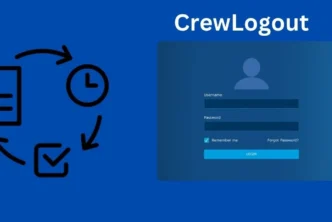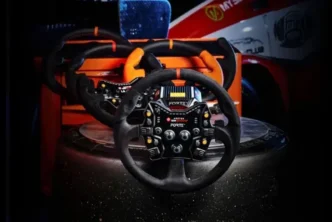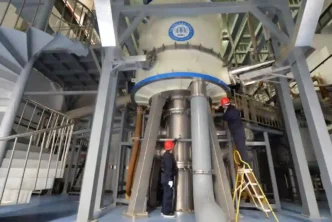Tracking shots can be very visually stimulating to viewers. They allow the audience to be taken on a journey through a scene and they keep viewers more engaged by showing them unique perspectives. However, filming a tracking shot can be quite challenging for some shooters, especially if you have never done one before. We are going to look at the different types of tracking shots and the best gear to achieve those shots effectively.
Handheld Tracking Shot
Handheld tracking shots are probably the most common type of tracking shot. They are easy to do and can be very smooth if done correctly. In order to achieve a handheld tracking shot, you will need a Steadicam or a handheld stabilizer. A Steadicam is a more expensive option, but it will give you more flexibility and control over your shots. If you go this route, you will need a Steadicam vest and arm. The benefit of going this route is that you have more flexibility to follow your subject since the camera isn’t attached to your body. This makes it easier to shoot over people’s heads or around corners. A handheld stabilizer like the DJI Osmo can also give you great results for a fraction of the cost if you are shooting with your iPhone. If money isn’t an issue, the DJI Ronin M is a good option. It will also cost more and be heavier to hold which can tire out your arms faster, but it gives you a great deal of flexibility.
If you are shooting with a mirrorless or DSLR camera you may want to get a cage to make the camera easier to hold. It also provides you with a few mounting points for accessories. These cages typically have a hot shoe mount on top which will allow you to attach a monitor. An external monitor is a must if you are going to be doing handheld tracking shots. Not only does it make it easier for you to see what’s in your frame, but it also allows the people you are filming to see what the camera sees. If you would like to capture sound a shotgun mic can also be attached to the cage.
Dolly Shot
Dolly shots are another common type of tracking shot. They are often used to show the environment that a character is in or to reveal something important. They can be done with a dolly or a slider. A dolly is a cart with wheels that you can push or pull along while filming. This gives you the ability to move the camera smoothly in any direction. A slider is a device that you can use to move the camera along a track. This is the cheapest option, but it also gives you the least amount of flexibility.
To get the most out of your dolly shots, you will need a good dolly and tripod. A quality dolly will be less prone to wobble and will move more smoothly. It should also have a brake so that you can control the speed of your dolly movement. Attach your camera to a fluid head so that you can pan and tilt smoothly. A fluid video head is especially important if you want to get smooth pans and tilts when in motion. Make sure the fluid head and dolly system are able to handle the weight of your camera.
Dolly Zoom Shot
Dolly zoom shots are often used to show the feeling of fear, confusion, or distress. It is often used to show a character’s inner turmoil. A dolly zoom shot also commonly known as “Vertigo zoom” as made famous by the movie Vertigo. Dolly zoom shots are created when you move towards your subject while zooming out at the same time. This causes your subject to become smaller while the background becomes larger. This can be a very powerful tool to create an emotional response from your audience.
To achieve a good dolly zoom shot, you will need a dolly and a zoom lens. The dolly should be able to move in all directions so that you can get the desired shot. The zoom lens will allow you to vary your focal length while still maintaining focus on your subject. A zoom lens will also give you more flexibility than a prime lens.
Drone Tracking Shot
Drone tracking shots are another type of common tracking shot. They are often used to show a subject within a larger environment. Drone shots can show a landscape or cityscape. They can also be used to show the scope of an event such as a protest or large gathering of people.
To get good results with your drone tracking shot, you will need a drone and gimbal. A good all-around drone for this type of work is the DJI Mavic Pro. This drone can fold up small enough to fit in a backpack. It has strong performance and long flight times so you can get what you need without worrying about your batteries dying. The gimbal will help smooth out the movement of your drone which is necessary if you are moving along with your subject. The Mavic Pro has a built-in camera that can shoot 4K video.
If you are looking for a bigger drone to attach a large camera to, the DJI Inspire 2 is a great option. This drone can carry a payload of up to 7 kg, which is enough to hold most cinema-grade cameras. It also has a very stable platform that will give you smooth shots even in windy conditions.
Car-Mount Tracking Shot
Car-mount tracking shots are another type of common tracking shot. They are often used to give the viewer a ride-along view as your subject moves along. This is great for giving the viewers first hand experience on what it’s like being in the car with the talent. Car-mounts can also be done with other vehicles such as boats, bikes, or even horses.
To get good results with your car-mount tracking shot, you will need a car-mount and a gimbal. A good car-mount for this type of shot is the DJI Ronin-S. This mount has a 3-axis gimbal that will help to smooth out any bumps or jolts in the road. Your camera will attach to the top of the mount and you will be able to power it with a built-in battery. You can use this same set up for any other vehicle such as a boat, bike, etc.
Green Screen Tracking Shot
Green screen tracking shots are another type of common tracking shot. They are often used to composite a subject into a different environment. This is great for creating scenes that would be impossible to shoot in person. Green screen tracking shots can also be used to put the talent into different situations, like being in space or on another planet.
To use a green screen effectively with your green screen tracking shot, you will need a green screen and a tracking system. Green screen lighting is important. You need to light your green screen properly as this can make or break the final product. If the green screen lighting isn’t even and exposed enough it will be hard to replace in post-production. Also, make sure your talent is far enough away from the background so that there are no shadows on the green screen backdrop. There are a variety of green screen lights that would work, just make sure the color temperature is adjustable. It is crucial that you know how much light should be on your actors, as well as, if it is soft light or hard light, depending on the background you will be adding in later. You can use 3D tracking software to help with the compositing process.
In Conclusion
What is common between all of these tracking shots? They all require smooth movement if you want to get good results. All of them used smooth camera movement as an important storytelling tool. This can be achieved by using a dolly, fluid head tripod, or gimbal. These tools will help you achieve smooth motion for your shots and give you better video footage in the process. If you are looking to break into the world of cinematography, then you will need to learn how to use these tools effectively.




